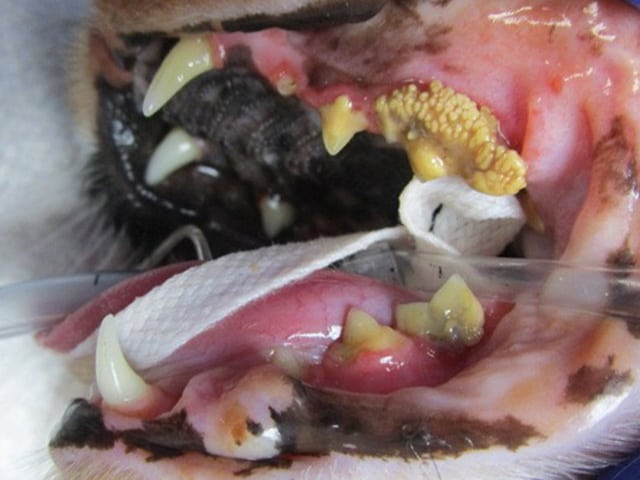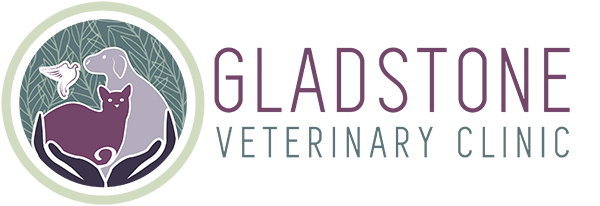Dental Care
Dental disease is the most common problem in our pets, affecting 85% of dogs and cats over 3 years of age. Unfortunately, these problems are not just limited to gingivitis, periodontitis, resorptive disease, and tooth loss. Left untreated, dental disease is often painful and can cause serious problems such as heart, lung, liver, and kidney disease, as oral bacteria are released into the bloodstream.
At-home dental care and regular dental cleanings (prophylaxis) are necessary to keep your pet’s teeth and gums healthy and happy and to avoid some of the secondary problems related to dental disease.
Oral Examination
An oral examination is one of the most important parts of every health evaluation. We are assessing the severity of dental tartar and gingivitis, looking for fractured or loose teeth, malalignment, missing teeth, evidence of resorptive disease, and any signs of oral ulceration or masses. Based on these findings, your veterinarian may make a recommendation for further dental care.

Dental Procedures
For most dogs and cats, professional dental cleaning and oral evaluation under general anesthesia are recommended every 12-24 months. General anesthesia allows for a much more thorough evaluation of your pet’s mouth that isn’t possible with an awake dog or cat. It also allows us to place an endotracheal tube to protect your pet’s airway, so that no water, chipped-off tartar, etc., is accidentally aspirated, which could cause life-threatening pneumonia. At Gladstone Veterinary Clinic, professional dental procedures include the following:
- Pre-anesthetic labwork to help alert us to any problems with organ function or to hidden health conditions in order to reduce risks of anesthesia
- A pre-anesthetic physical exam the day of the procedure, to ensure that your pet hasn’t experienced any health changes since his or her last visit
- IV catheter and fluids and comprehensive anesthetic monitoring by a Certified Veterinary Technician trained and dedicated to providing the safest level of anesthesia for your pet (see ANESTHESIA for more information) (link to anesthesia services page)
- A thorough oral exam under general anesthesia by your veterinarian, including measurement of periodontal pockets around each tooth, evaluation of fractures, loose or missing teeth, malalignment, cavities, or resorptive disease. This oral exam is much more comprehensive since your pet is under anesthesia, and additional dental problems may be found.
- Full-mouth dental radiographs are taken to help us thoroughly evaluate the teeth, particularly the part of the tooth that is below the gumline. We evaluate dental radiographs for periodontal disease, bone loss, root abscesses, tooth fractures, and resorptive disease, as well as to assess any missing teeth to see if roots are present
- A thorough dental cleaning, including hand and ultrasonic scaling to remove tartar and plaque from the teeth both above and below the gumline
- Thorough polishing of each tooth smooths any small scratches left by scaling tools, and is an important step in slowing the rate of future tartar build up
- Dental extractions or periodontal treatment, if necessary. We use nerve blocks for your pet’s improved comfort both during and after the procedure, surgical flaps for extractions, and close extraction sites with suture designed for use in the mouth. We always take a dental radiograph after extraction to confirm that all tooth roots were removed. Pre-operative, intra-operative and post-operative pain medications are used to keep your pet comfortable after any dental extractions. Antibiotics may be prescribed to prevent infection of extraction sites.
- Before and after photographs of your pet’s mouth help illustrate areas of concern
- Thorough discharge instructions explaining post-operative care of your pet
- A courtesy follow-up appointment to evaluate extraction sites and to discuss home care options
Home Dental Care
We are always available to discuss home dental care with you and help you determine what will be the best option for your pet and your lifestyle. We provide courtesy appointments to discuss home dental care two weeks after every dental procedure. During that time one of our technicians will review options to help slow the progression of dental and periodontal disease. We will also follow-up with you 1-2 weeks later, to see if you have any additional questions. As in humans, home dental care is not a substitute for a thorough dental evaluation and cleaning under general anesthesia.
- Home Tooth Brushing using a toothpaste developed for pets helps remove plaque as it develops. It is best to brush daily, but brushing three times weekly has been shown to significantly slow plaque development. Home tooth brushing is by far the BEST method of home dental care that you can provide for your dog or cat.
- Dental Diets—Many dental diets are formulated to remove plaque by abrasion as your pet chews. Some also contain an ingredient to decrease plaque formation. It is best to feed a dental diet as a primary diet.
- CET Oral Rinse contains a plaque-fighting ingredient which is applied using a squeeze bottle to rinse teeth and gums. It is best to rinse after each meal, but daily rinsing will benefit your pet’s dental health.
- CET Dental Chews contain an enzyme to help prevent plaque formation. The chews also remove plaque by abrasion as your pet chews. A daily chew is best, but chews three times weekly can help reduce plaque formation.
- CET Water Additive contains a plaque-fighting ingredient to help improve oral health every time your pet drinks. Water must be replaced daily, and this may not be a good option for dogs or cats that do not like the taste of this additive.
Signs of Dental Disease
Although most pets hide signs of dental disease, here are some things to watch for at home. Please call for an appointment immediately if you see any of these signs in your pet.
- Bad breath
- Yellow or brown tartar on teeth
- Gums that are red or bleeding
- Loose or missing teeth
- Favoring one side of the mouth when chewing
- Difficulty eating or chewin
- Pawing at the mouth or head-shaking
- Reluctance to chew on toys
- Facial swelling or sensitivity around the mouth
- Irritability or depression
Ready to make an appointment?
Our contact information is below! We look forward to seeing you soon!
Contact Gladstone Veterinary Clinic today!

Our Address

Current Hours
Monday: 8:30am - 5:30pm
Tuesday: 8:30am - 5:30pm
Wednesday: 8:30am - 5:30pm
Thursday: 8:30am - 5:30pm
Friday: 7:00am - 5:30pm
Saturday: Closed
Sunday: Closed

